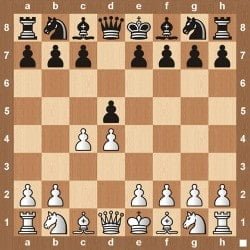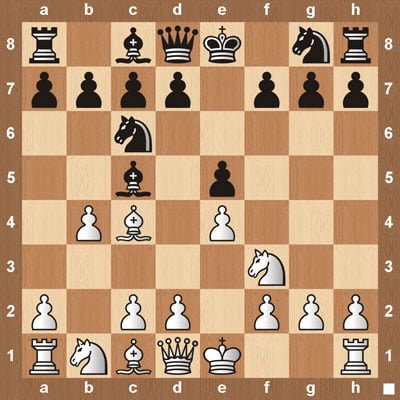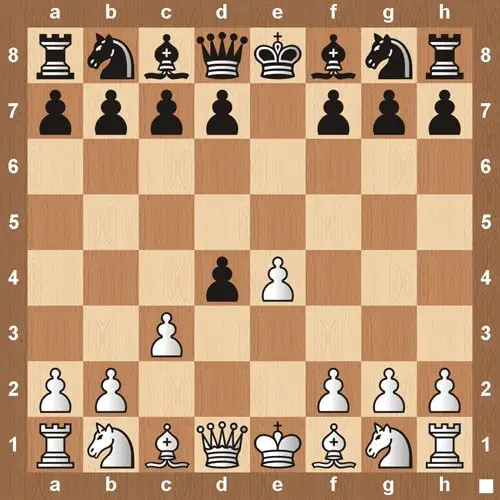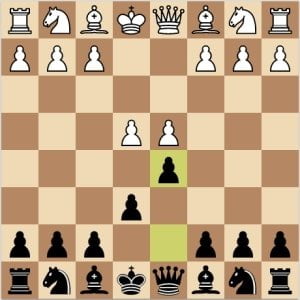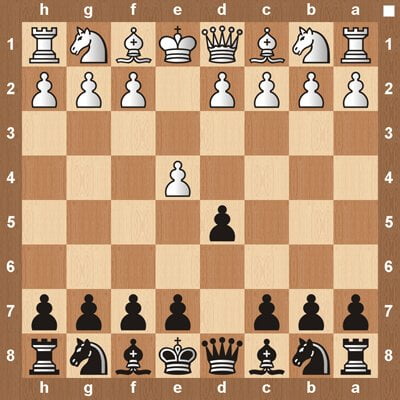Mastering the Sicilian Defense: A Comprehensive Guide
The Sicilian Defense: it’s a phrase that sends a surge of excitement through chess enthusiasts, instantly igniting images of thrilling strategic duels. The Sicilian Defense, known for its deep tactics and enthralling complexity, is not simply a chess opening; it’s a journey into the heart of strategic depth that this centuries-old game has to offer. From beginner players honing their skills to Grandmasters crafting their match-winning strategies, the Sicilian Defense has a compelling allure that’s simply hard to resist.
Brief History of the Sicilian Defense
Stepping back into the annals of chess history, the Sicilian Defense’s roots can be traced to the late 15th century. It was first recorded in an Italian manuscript known as the “Göttingen manuscript.” Yet, it was not until the 20th century that the true strength of this opening came to the fore. Many consider the pivotal moment to be the 1946 match between International Grandmaster David Bronstein and Soviet chess champion Alexander Kotov. Bronstein’s victorious use of the Sicilian Defense opened the world’s eyes to the profound strategic depth of this opening, forever changing the landscape of competitive chess.
Why it’s popular among chess players
At the heart of the Sicilian Defense’s popularity is its incredible versatility and the exciting counter-attacking possibilities it offers. Unlike more traditional openings, the Sicilian Defense doesn’t seek to mirror the opponent’s moves; it challenges them head-on. It empowers Black to seize the initiative and force the game into complex, tactical middlegames where a well-prepared player can thrive.
Also, its numerous variations ensure that it fits virtually every playing style. Whether you are a fan of aggressive play, prefer maneuvering, or enjoy positional battles, there is a version of the Sicilian Defense tailor-made for you. In a world where chess strategy evolves with every game played, the Sicilian Defense remains a timeless choice, providing countless players the strategic arsenal to turn a match on its head.
Understanding the Basics
The Sicilian Defense is a world within a world, and diving into its intricacies is a key aspect of the chess journey. For beginners and advanced players alike, understanding its basic premises is the first stepping stone to mastering this opening.
Explanation of the Opening Moves
The Sicilian Defense begins with the moves 1.e4 c5. Here’s what’s fascinating about these two simple moves:
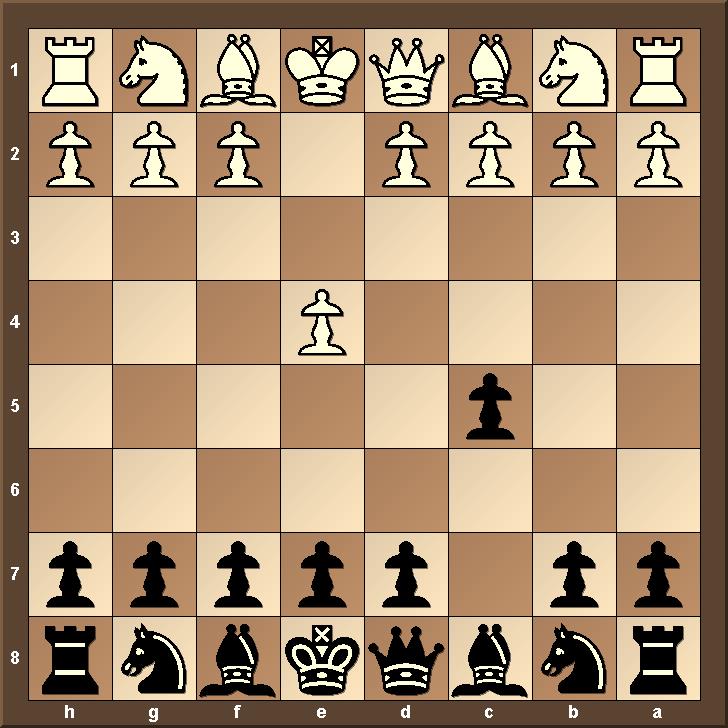
- e4: A common opening move in chess, it controls the center and frees up the queen and bishop. It is a central tenet of chess opening principles.
- c5: This is where the Sicilian Defense breaks from convention. Instead of mirroring White’s move with e5, Black sidesteps and takes control of the d4 square while simultaneously preparing to fianchetto the bishop.
The choice of the Sicilian Defense as an opening move speaks volumes about the player’s mindset. This opening strategy does not merely react to the opponent’s moves; it seeks to carve its own path. To understand why this is so effective, it’s crucial to appreciate the importance of the knight in chess, especially in controlling the center.
Diagrams Illustrating the Initial Positions
The following diagram illustrates the initial position after 1.e4 c5.
| 8 | r | n | b | q | k | b | n | r |
| 7 | p | p | . | p | . | p | p | p |
| 6 | . | . | . | . | . | . | . | . |
| 5 | . | . | p | . | . | . | . | . |
| 4 | . | . | . | . | P | . | . | . |
| 3 | . | . | . | . | . | . | . | . |
| 2 | P | P | P | . | . | P | P | P |
| 1 | R | N | B | Q | K | B | N | R |
| a | b | c | d | e | f | g | h |
White (at the bottom) begins by moving the pawn from e2 to e4. Black responds with c7 to c5. This formation signifies the onset of the Sicilian Defense. The board becomes a battlefield of strategy, with both sides striving for control and advantage.
As the game progresses, the Sicilian Defense can branch out into various sub-variations. Each offers different strategic and tactical opportunities, contributing to the Sicilian Defense’s longevity and popularity among chess players.
Variations of the Sicilian Defense
The Sicilian Defense, one of the most complex and aggressive options available to black in response to white’s e4, offers a plethora of options to cater to different styles of play. In this article, we dive into the different variations of the Sicilian Defense, each with its unique characteristics and game plan.
Open Sicilian
In the Open Sicilian, which begins with the moves 1.e4 c5 2.Nf3 followed by 3.d4, white opens up the center, seeking to establish a broad pawn center and develop his pieces rapidly. With a symphony of potential pawn structures, piece placements, and tactical themes, the Open Sicilian tests both players’ knowledge of theory and their understanding of chess principles.
This aggressive variation is popular at all levels, with Grandmasters utilizing it for a chance at an early advantage. If you’re a beginner trying to navigate the Open Sicilian, our chess tips for beginners might prove invaluable.
Closed Sicilian
In contrast to the Open Sicilian, the Closed Sicilian starts with 1.e4 c5 2.Nc3 and 3.g3, keeping the center closed. White focuses on piece development and plans a later assault on black’s position, particularly aiming to launch an attack on the kingside.
The Closed Sicilian can lead to intricate strategic battles that, while less theoretical, require a good understanding of positional chess. One might argue this variation is more akin to the contemplative nature of meditation, fostering an environment for strategic and tactical creativity to bloom.
The Najdorf Variation
The Najdorf Variation (1.e4 c5 2.Nf3 d6 3.d4 cxd4 4.Nxd4 Nf6 5.Nc3 a6) is one of the most respected systems in the Sicilian Defense. Named after Argentine Grandmaster Miguel Najdorf, this variation prioritizes flexible development over immediate tactical complexities.
Adopting the Najdorf can be a game-changer. It’s been favored by many chess prodigies and world champions like Bobby Fischer and Garry Kasparov. To know more about these prodigies, check out our article on chess prodigies.
Scheveningen Variation
The Scheveningen Variation, characterized by the moves 1.e4 c5 2.Nf3 d6 3.d4 cxd4 4.Nxd4 Nf6 5.Nc3 e6, focuses on solid development and control over key central squares. This variation often leads to intricate middlegame positions rich with tactical possibilities, highlighting the need to understand chess principles beyond the opening principles.
Dragon Variation
The Dragon Variation is one of the most aggressive Sicilian Defense lines. With 1.e4 c5 2.Nf3 d6 3.d4 cxd4 4.Nxd4 Nf6 5.Nc3 g6, black fianchettoes the bishop to contest the central squares and castles kingside for safety. The Dragon Variation is akin to a fierce battle where each player’s move may be crucial in determining the game’s outcome.
In some ways, the tactical and aggressive nature of the Dragon Variation can be likened to the ferocity and determination of a knight charging into battle. For more on the importance of knights in chess, our article on why the knight is important in chess is a great read.
Paulsen Variation
The Paulsen Variation, initiated with 1.e4 c5 2.Nf3 e6, is a flexible and solid choice, providing options to transition into many other Sicilian lines. The Paulsen often leads to complex middlegame positions where strategic understanding is pivotal, which we delve into in our article on chess strategies in real life.
As you explore the Sicilian Defense and its many variations, remember that choosing a variation should align with your style of play and strategic preferences. Take your time to understand the different ideas in each variation and, most importantly, enjoy the process of learning and playing the Sicilian Defense.
Strategy and Tactics
Unleashing the power of strategy and honing the finesse of tactics is key to mastering the Sicilian Defense.
Basic Principles and Objectives When Playing the Sicilian Defense
The Sicilian Defense is a favorite among club and professional players alike due to its rich opportunities for counterplay. The basic objectives of this opening include controlling the center, developing pieces efficiently, and maintaining a strong pawn structure.
Objectives:
- Center control: While 1.e4 e5 openings directly contest the center, the Sicilian Defense aims to control it from a distance with the move 1…c5, which targets the d4 square.
- Piece Development: This is critical in the Sicilian, where quick development can pressure the opponent early in the game. Be sure to follow the golden rule: Knights before Bishops! As discussed in our guide on chess opening principles, developing your pieces efficiently is key to gaining an early advantage.
- Pawn Structure: In the Sicilian Defense, maintaining a robust pawn structure can aid in both offensive and defensive strategies. The pawn structure can also play a crucial role in endgame scenarios, as demonstrated in our articles on the endgame rook vs pawn and queen vs pawn endgame.
Remember, chess is as much a psychological battle as it is a battle of pieces. Stay mindful of your opponent’s moves, and try to anticipate their strategies. Check out our post on chess psychology for more insights.
Common Traps and Pitfalls to Avoid
While the Sicilian Defense provides players with numerous offensive and defensive opportunities, it is not without its pitfalls. Some common traps include:
- Smith-Morra Gambit: An aggressive opening where white sacrifices a pawn early for quick development and control of the center.
- Bowdler Attack: An unsound attack that can be easily refuted with good play, but could be dangerous for the unaware.
- Fried Liver Attack: A daring attack that targets the f7 square, potentially leading to checkmate if not properly defended.
To learn more about how to handle such attacks, refer to our articles on chess tips for beginners and how to improve your chess game.
Exploring Key Strategic Ideas and Tactical Themes
The Sicilian Defense opens up a plethora of strategic ideas and tactical themes for players. Here are a few worth exploring:
- Pawn Chains: In the Sicilian Defense, pawn chains are a common theme. They not only provide structural solidity but also dictate the flow of the game.
- Counterattacks: The Sicilian Defense is known for its counterattacking potential. A well-timed counterattack can disrupt your opponent’s plans and turn the tables in your favor.
- Positional Sacrifices: In the Sicilian, it’s not uncommon for players to sacrifice material to gain positional advantages or to launch devastating attacks.
Developing a deep understanding of these strategic ideas will elevate your Sicilian Defense. Our article on chess strategies in real life explores these themes further. Also, if you’re curious to see how the Grandmasters tackle this, check out our piece on best chess players in the world.
In-Depth Analysis
In this section, we will delve into the deeper nuances of the Sicilian Defense, discussing it in terms of real-world model games. We will analyze key decisions and explore possible alternatives, equipping you with a comprehensive understanding of this fascinating opening.
Detailed Walkthrough of Model Games Using the Sicilian Defense
It’s often said that practice makes perfect, and in chess, there’s no better way to learn than by studying model games. Here are three model games that exemplify the strengths of the Sicilian Defense, each followed by a detailed walkthrough:
- Fischer vs. Larsen, 1958 – This game is a brilliant display of how the Sicilian Defense can disrupt the opponent’s plans and pave the way for a counterattack. The game features Fischer’s trademark aggressive style, with a series of tactical blows leading to a crushing victory.
- Kasparov vs. Karpov, 1985 – A testament to the Sicilian Defense’s dynamism, this game showcases a dramatic middle-game battle, illustrating the opening’s flexibility and propensity for imbalance.
- Carlsen vs. Anand, 2014 – In this game, Carlsen employed the Sicilian Defense in the World Championship match, which led to a well-fought draw.
Let’s delve deeper into these games to better understand the strategies and tactics involved in the Sicilian Defense. Please note that we are using algebraic notation, a standard system used to describe the moves in a game of chess. If you are unfamiliar with this system, please refer to our guide on basic chess rules.
Detailed analysis and annotations of the games…
By analyzing these games, you can understand how top players exploit the flexibility and counterattacking potential of the Sicilian Defense. To improve your grasp of these games, consider replaying them on your tournament chess set, allowing you to visualize the action and better understand the thought processes of the players.
Examination of Key Decisions and Alternatives
Every chess game is a complex tapestry of decisions and alternatives, with each move opening up a new set of possibilities. In the Sicilian Defense, understanding these decision trees can be the key to mastering the opening.
Here are some key decisions that arise in games featuring the Sicilian Defense, along with potential alternatives:
- Decision to castle queenside – Often, a player using the Sicilian Defense may decide to castle queenside to initiate a pawn storm against the opponent’s king. However, an alternative would be to delay castling to keep the king in the center and maintain flexibility.
- Pawn structure decisions – The Sicilian Defense often results in an asymmetrical pawn structure that can be manipulated to create dynamic imbalances. One key decision involves the d5 break, aiming to disrupt the opponent’s control of the center.
- Piece development – Choosing where to develop the knights and bishops is critical in the Sicilian Defense. While the most common squares for the knight are d7 and c6, alternative squares such as e7 can also be considered in some lines.
To better grasp these key decisions and alternatives, you can analyze them in the context of model games. Furthermore, learning about chess psychology can provide insights into the mindset of a chess player when making these decisions.
Preparing for the Sicilian Defense as White
As a chess player, your game strategy, much like in life, is often guided by reactions and counteractions. In the realm of chess, you’re likely to encounter the Sicilian Defense which is a popular response by Black to the King’s Pawn Opening (1.e4). The key to effectively play against the Sicilian Defense is understanding its complex lines and preparing your responses well in advance.
Best responses and strategies when facing the Sicilian Defense
Below, we break down the top three approaches you can employ when facing an opponent who chooses to play the Sicilian Defense.
1. Open Sicilian (2.Nf3 and 3.d4)
The Open Sicilian is the most aggressive and popular choice among top players. By choosing this line, you aim to dominate the center early in the game.
The game might go as follows:
- e4 c5 (Black opts for the Sicilian Defense)
- Nf3 (you prepare to strike at the center with d4)
- d4 cxd4
- Nxd4 (you’ve now entered the Open Sicilian)
From here, the game can diverge into various specific variations of the Sicilian, each with its strategies and counter-strategies, such as the Scheveningen, Najdorf, or Dragon variations, among others. It’s crucial to learn and practice these lines. You can use the Sicilian Defense guide on our website for deeper understanding.
2. Closed Sicilian (2.Nc3 and 3.g3)
The Closed Sicilian offers a more positional and less tactical game compared to the Open Sicilian. Here, instead of battling for the center immediately, you focus on piece development and pawn structure.
The game might proceed as follows:
- e4 c5 (Black opts for the Sicilian Defense)
- Nc3 (you develop your knight and prepare to fianchetto your bishop)
- g3 (preparing to fianchetto the bishop)
Refer to our article on chess opening principles for more insights on piece development and control of the center.
3. Anti-Sicilian Variations
Anti-Sicilian variations are alternatives to the Open Sicilian, aimed at taking the opponent out of the mainline theory. These include moves like 2.c3 (the Alapin Variation), 2.Na3 (the Wing Variation), or 2.a3 (the O’Kelly Variation).
A reminder: knowing the theory is important, but so is understanding the strategies behind these moves. Your understanding of chess psychology and being able to anticipate your opponent’s plans can often turn the tide in your favor.
Practicing Your Strategy
To improve your skills and prepare for the Sicilian Defense, consider these steps:
- Analyze Grandmaster Games: Study how top players handle the Sicilian Defense. You can learn a lot from their decision-making processes and the strategies they employ.
- Use a Chess Engine: Chess engines can help you understand the best possible moves in any given situation, allowing you to explore different lines in the Sicilian Defense.
- Simulate Games: Play practice games with friends or online, specifically focusing on the Sicilian Defense.
- Learn From Your Mistakes: Review your games to identify mistakes or weaknesses in your play, then work on those areas.
By effectively preparing yourself for the Sicilian Defense, you’ll feel more confident and play better when it arises in a game. Remember, chess is not just about winning, but also about improving your skills and having fun.
Modern Use of the Sicilian Defense
As we delve into the contemporary world of high-level play, it’s clear that the Sicilian Defense continues to be a preferred opening choice for many of the world’s top players. Its dynamism and strategic depth make it an effective tool in the hands of a seasoned player. Let’s explore how this age-old defense remains relevant today.
The Sicilian Defense’s Popularity and Usage in Contemporary High-Level Play
It’s hard to overlook the Sicilian Defense’s dominance in modern chess, thanks in part to its widespread adoption by leading players worldwide. It’s often seen in important tournaments and championships, proof of its enduring appeal.
- Popularity: According to a study by 365Chess.com, the Sicilian Defense is the most popular chess opening, making up approximately 17% of all games played. It far surpasses the French Defense and the Caro-Kann Defense in usage.
- Usage by Top Players: Many of the greatest players in history, such as Garry Kasparov and Bobby Fischer, have used the Sicilian Defense to great effect. Our blog post on the best chess players in the world provides a deeper insight into their remarkable careers and their successful use of this opening.
Key Reasons for Popularity
The Sicilian Defense’s popularity comes from its flexibility and aggressive counterattacking nature. Let’s analyze why it’s an integral part of high-level play:
- Versatility: The Sicilian Defense can be adapted to match various play styles, be it aggressive or more positional. There are numerous variations, like the Najdorf, Scheveningen, and Dragon, each with their unique traits and strategies.
- Counterattacking Potential: The Sicilian Defense doesn’t just aim to neutralize White’s initial advantage but seeks to create counterattacking chances, often leading to rich, complex positions.
- Unbalanced Positions: The Sicilian Defense tends to result in asymmetrical pawn structures, leading to unbalanced positions. This asymmetry often makes for more exciting games and provides greater winning chances for both sides compared to symmetrical openings.
- Theoretical Development: The Sicilian Defense has a vast amount of theoretical knowledge built around it. Serious players spend years mastering its nuances. For a deeper understanding, check out our article on the Sicilian Defense.
- Psychological Edge: Its reputation for complexity can give the player using it a psychological edge, as explored in our article on chess psychology.
Despite its advantages, it’s essential to remember that the Sicilian Defense, like any other opening, is not a magic bullet. Success depends on the player’s understanding of the opening, the quality of their overall play, and their ability to adapt to the game’s ensuing phases.
How to Practice the Sicilian Defense
Perfecting the Sicilian Defense, like many chess openings, requires a combination of strategic understanding, tactical finesse, and consistent practice. The following resources and training methods can guide you towards mastering this powerful opening.
Practice with a Quality Chess Set
To start off, having a good quality chess set can significantly boost your playing experience and focus. Be it a travel chess set for practicing on the go, a tournament chess set for simulating professional play, or a themed chess set to add some fun to the learning process, find the one that suits your preferences.
Understand the Core Principles
The Sicilian Defense can be a complex opening, but by understanding its core principles and strategies, you can navigate it effectively. Remember, the aim is to control the center quickly with your pawns and then deploy your knights to their most effective squares.
Use Chess Books and Online Resources
There are numerous books and online resources dedicated to the Sicilian Defense. For instance, the website Chess.com provides detailed articles and videos on various Sicilian Defense variations.
Study Grandmaster Games
Studying games by the best chess players who frequently used the Sicilian Defense can provide invaluable insights into how to use the opening effectively. Players like Garry Kasparov and Bobby Fischer have left a trove of games to learn from.
Practice Regularly and Analyze Your Games
Regular practice is essential. Use your chess board and set to play out the Sicilian Defense and its variations. After each game, take the time to analyze your moves and decisions. You can use computer-based chess programs for in-depth analyses.
Train with Chess Software
Chess software like ChessBase offers dedicated training modules for openings including the Sicilian Defense. These programs can give you a wide range of opponent responses to practice against.
Get a Chess Coach
A good chess coach can provide tailored advice and guidance to help you understand and practice the Sicilian Defense effectively.
By combining these resources and methods, you can approach your training for the Sicilian Defense systematically and effectively. Remember, it’s not just about learning the moves, but also understanding the ideas behind them. So, take your time, enjoy the process, and see your game improve step by step.
Conclusion
Mastering the Sicilian Defense can be a journey of strategic depth, tactical understanding, and consistent practice. As we have outlined, the resources and training methods at your disposal are numerous. From selecting a quality chess set that suits your style to studying grandmaster games, there is a wealth of knowledge to tap into.
The Sicilian Defense, with its complex and varied structures, not only offers an effective response to 1.e4 but also provides countless opportunities for rich and challenging games. By understanding the core principles and leveraging books, online resources, chess software, and possibly even a coach, you can develop a robust repertoire based around this popular opening.
Remember that chess, at its heart, is a game to be enjoyed. Therefore, while you’re on your journey to mastering the Sicilian Defense, make sure to enjoy every move, every game, and every moment of growth. Chess mirrors life in its demand for strategic thinking, patience, and adaptability. So, in developing your chess skills, you’re also fostering valuable life skills.
Your journey with the Sicilian Defense is just one step in your larger chess adventure. We hope this guide serves as a helpful companion as you explore the fascinating world of chess openings. Remember, as much as the Sicilian Defense is about strategy, it’s equally about the joy of learning and the thrill of playing. Good luck, and may your Sicilian Defense become a formidable part of your chess arsenal!
Resources
There’s no doubt that understanding and mastering the Sicilian Defense is an ongoing journey. Thankfully, countless resources are available for further study and exploration. Here are some we highly recommend:
- Books
- The Complete Sicilian by Mikhail Golubev: A detailed and comprehensive book providing insight into all the major Sicilian lines.
- Sicilian Defence: Move by Move by Neil McDonald: Excellent for beginners, this book breaks down the concepts into understandable chunks.
- The Sicilian Scheveningen: Move by Move by Neil McDonald: Focused on the Scheveningen variation of the Sicilian, this book is perfect for advanced players looking to refine their game.
- Online platforms
- Chess.com: Offers comprehensive lessons and an opportunity to play against AI or real players.
- Lichess.org: Known for its interactive lessons and tactical puzzles. You can practice the Sicilian Defense against its AI in multiple difficulty settings.
- Internet Chess Club (ICC): Another resource-rich platform where you can play, learn, and watch live tournaments.
- Chess Software
- Personal Coaching
- Hiring a coach can be a great way to get personalized guidance and feedback, especially if you’re serious about improving your skills. Platforms like Chess.com provide coaching services.
- Our website
- Don’t forget our chess tips for beginners and how to improve your chess game articles for general strategies and advice.
- Our guide on the Sicilian Defense will provide more detailed insight into this opening.
Remember that consistency is key when it comes to chess. Regular practice, paired with these resources, will aid in the gradual improvement of your Sicilian Defense, as well as your overall chess skill set. Happy studying!
FAQ
- What is the Sicilian Defense?
The Sicilian Defense is a popular chess opening that starts with the moves 1.e4 c5. - Why is the Sicilian Defense so popular?
The Sicilian Defense is popular due to its aggressive nature and flexibility, providing rich and complex positions that can lead to various types of games. - Is the Sicilian Defense good for beginners?
While the Sicilian Defense can be complex, it can be a good opening for beginners to learn due to its strategic depth and the valuable lessons it teaches about piece development and pawn structure. - How can I practice the Sicilian Defense?
You can practice the Sicilian Defense by studying classic games, using chess software or apps, engaging in online practice, and playing against opponents in real-life situations. - Who are some famous players known for using the Sicilian Defense?
Some of the most renowned players who frequently used the Sicilian Defense include Garry Kasparov, Bobby Fischer, and Vishwanathan Anand. - What are the main variations of the Sicilian Defense?
The main variations of the Sicilian Defense are the Najdorf Variation, the Scheveningen Variation, the Dragon Variation, the Classical Variation, and the Closed Sicilian. - Is the Sicilian Defense an aggressive opening?
Yes, the Sicilian Defense is generally considered an aggressive opening, providing opportunities for both tactical and strategic play.

